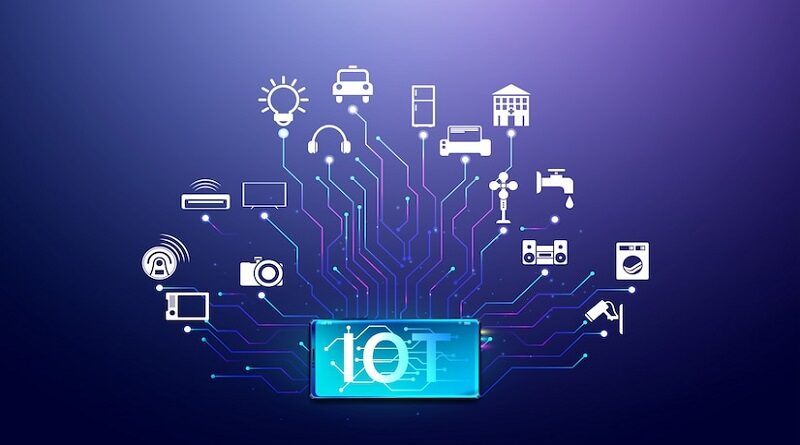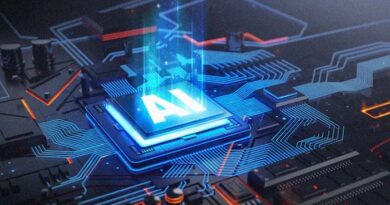Guide to IoT Analytics: 7 Key Tips
The Internet of Things (IoT) is one of the most disruptive technologies available today. Networks of interconnected devices can streamline operations and make the customer experience more convenient, and their potential goes far beyond these simple use cases.
What Is IoT Analytics?
As the name suggests, IoT analytics is the data analytics application for IoT-derived data. There are more than 11.3 billion connected IoT devices in the world today, representing a huge source of data available to businesses. IoT analytics allows companies to turn this data into actionable insights.
Given the scope and variety of IoT itself, these analytical processes vary widely. Some applications are very specific, such as using connected machine sensors to know when to repair a device, while others are more open-minded, such as analyzing user behavior to create personalized experiences. Likewise, IoT analytics can vary depending on where you process the data. Most architectures send data from IoT endpoints to a centralized location for analysis in batches, but edge analytics processes data from each device at the source. Regardless of the specifics, these workflows help you act on information gathered by IoT devices, providing more efficient business insights.
Why Enterprises Need IoT Analytics
Implementing IoT analytics can give you more insight and control over the small details of your operations. Predictive methods can go further and help you prepare for the changes ahead. As industries become more competitive and data wealth grows, so will these benefits.
As IoT adoption skyrockets, businesses must do everything they can to get the most out of their IoT environment to stay competitive. Already 59% of all organizations in some industries are now implementing IoT networks. Just having connected devices is no longer enough to stay one step ahead. Businesses need to leverage their IoT data, which analytics enables.
How to Implement IoT Analytics
Given how varied IoT analytics environments can be, there’s no one path forward for every business. However, some key considerations remain constant across use cases. Here’s how your organization can design and implement IoT analytics projects.
- Define Your Goals and Data Scope
The first step is to define what you want from your analytics project. Start by finding one area where IoT analytics can provide value, such as reducing operating costs or improving return on investment, then outline your specific goals within that framework.
Once you know your goals, you can define your data range. Identify the type of data you need and how you can collect it through IoT.
The sheer volume of data is the biggest barrier to effective analytics, with 62% of government CIOs citing this as their top challenge. Many organizations struggle with this because they collect and analyze more than they need. Defining the scope of your data in advance helps prevent this over-collection.
- Review Regulatory Guidelines
Before purchasing hardware or starting to design an IoT network, you should also review all applicable regulations. The IoT Cybersecurity Enhancement Act of 2020 and similar legislation may require certain organizations’ IoT environments to meet certain security standards. Even if IoT-specific laws do not apply, data privacy regulations may still occur.
If you only use IoT devices to collect data about your own processes, you may not have to meet specific standards. However, if your IoT analytics project requires customer data, you need to consider what information you collect and how you protect it. Privacy regulations may limit the types of data you can collect, or the security measures you must take. These restrictions will dictate what devices and programs you can use, so it’s important to review these considerations before proceeding.
- Acquire Necessary Devices and Software
Once you have defined the goal, scope, and regulatory requirements, you can get the hardware and software you need. The most important consideration in this step is to decide if you want to build your own solution or use an existing platform.
Start by reviewing data coverage and security requirements to determine the type of device you need. If off-the-shelf, off-the-shelf solutions work, it’s more cost-effective to buy than to build. However, if you need a highly specialized hardware or network setup, you can work with an IoT analytics developer to create a custom solution. Likewise, your goals can inform the software you need to analyze your IoT data and act on the results. With over 65 key players in the industry, the IoT analytics market is large and diverse enough that existing platforms can meet many specific needs.
- Standardize and Automate Where Possible
As you begin to deploy IoT devices and design your analytics workflows, you should standardize the process as much as possible. There are more than 21 IoT connectivity standards, and not all devices support them. While you don’t necessarily need every terminal to use the same protocol, standardization will make it easier to manage these networks.
Likewise, standardizing data types and storage solutions, where possible, helps streamline analysis. When things are consistent across the entire network, it’s easier to apply security and make necessary updates. You will also get a better picture of your IoT data.
Automation can help simplify the process even further. Automated updates, reporting tools, network analytics, and other systems leave you more time to focus on other, less repetitive, higher-value tasks. This is especially important for large, complex IoT networks.
- Consolidate and Clean IoT Data
When collecting IoT data, it is important to consolidate and clean it before analysis. Although this step is easy to overlook, it is essential for effective analysis programs.
Poor quality data costs businesses $15 million a year, but you can avoid most quality issues by cleaning data before analysis. Normalizing formats, removing redundant information, correcting incomplete records, and similar steps ensure that you do not act on erroneous data, thus avoiding losses.
Consolidation has similar benefits. Moving your data to one place before analysis gives you a complete picture right away. When you or your analysis programs don’t have to piece together different parts of a situation, you get more reliable information. Centralized data storage can also make it easier to secure sensitive information.
- Secure IoT and Analytics Environments
After implementing your IoT analytics system, you need to secure it. While cybersecurity is critical to any IT project, IoT environments are notoriously vulnerable. There have been 1.5 billion attacks against IoT devices in the first half of 2021 alone, so they deserve special attention.
One of the most important steps is network segmentation to separate IoT devices from more sensitive systems and data. Encrypting all IoT traffic and changing the default password is also important, as the default settings of many devices are not conducive to strong security. Securing the IoT analytics environment is also about IoT security. You must also protect all other endpoints, databases, and cloud platforms that you use to store or analyze data. Deploying a trustless architecture and using automated monitoring tools may be necessary.
- Review Processes and Results
Finally, remember that IoT analytics is an ongoing process, not a one-off project. Before you start using these systems, set goals using key performance indicators that are directly related to the goals you set in step one. Then, after using the system for a while, record the results and compare them with these benchmarks.
IoT analytics can be complex, so you may need to tune your system before it delivers optimal results. Given this uncertainty, it is important to start small before expanding these analytical processes to larger, more critical operations.
Implement an IoT Analytics Program Today
IoT Analytics is the next step for businesses looking to get the most out of modern technology. If you follow these steps and approach these projects carefully, you can see impressive returns.
IoT will only grow from there, creating more potential for analyzing the data it collects. Accessing and applying this information will be an important part of staying competitive as more businesses adopt this technology, so consider how you can benefit from it today. now.




